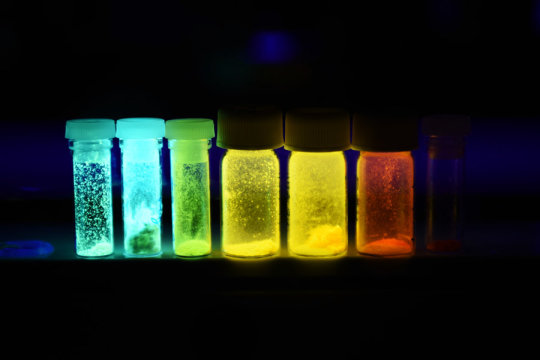Novel study from the Coordination Chemistry and Catalysis Unit at the Okinawa Institute of Technology and Science Graduate University (OIST) describes a novel strategy for producing photoluminescent (PL) compounds with enhanced capabilities.
Production of PL compounds is usually centred on two main methods – the traditional metal-ligand system or an aggregation based system. The first technique needs an intricate ligand, or compound, that robustly binds to a metal ion in a way that would enable for the complex to emit light of specific wavelength. Unfortunately, this system is rigid and unable to be modified once the intricate is produced.
In contrast, the aggregation based system is driven by weak interactions between distinct molecules or their parts. This enables for tenability by shifting the colour of light emitted based on interactions of the PL compound with the local environment. However, aggregation is usually difficult to control and thus not feasible to use in systems requiring accuracy.
Recent study from OIST researchers links the best parts of both methods to produce PI molecules. “We intend to prepare better photoluminescent compounds by linking the two previous concepts – the flexibility of the weak aggregation driven intricacies and the controllability of the traditional metal-ligand system,” explains Dr. Georgy Chemistry and Catalysts Unit at OIST.
Scientists, headed by Lecturer Julia Khusnutdinova designed compounds whose photoluminescence depended on weak interactions between atoms within the single compound molecule itself. As a result, they availed the tenability of the aggregation based system confined to a singular molecule, without the requirement for intermolecular aggregation.

Akin to the conventional metal-ligan system, the molecules synthesized by Filoneko consist of a ligand and a copper ion that interact to product photoluminescence. But, the ligand in the OIST-synthesized molecules is not rigid and has two cyclic-bonded atom structures, referred to as rings, stacked on top of one another that can interact just like in the aggregation system, but within a single molecule.
An interesting fact is that the researchers identified that they could adjust the colour emitted from such molecule based on the distance between such rings. “We found that we could alter the colour produced by the compound based on what other groups of atoms were bound to the ligand,” says Filoneko.”Bigger groups would cause the rings to move closer together, shifting the colour to the orange-yellow range, while smaller substituents would make the rings move apart, altering the emission colour red. The potential to tune the wavelength of light emitted from such molecules provides a big benefit over the conventional metal-ligand PL intricacies.”
The controllability and tenability of such complexes makes them an attractive candidate for numerous applications. “We witness a high potential for such compounds to be used as sensors due to their very high sensitivity to the surrounding environment,” disclosed Filoneko
Filed Under: News


Questions related to this article?
👉Ask and discuss on Electro-Tech-Online.com and EDAboard.com forums.
Tell Us What You Think!!
You must be logged in to post a comment.